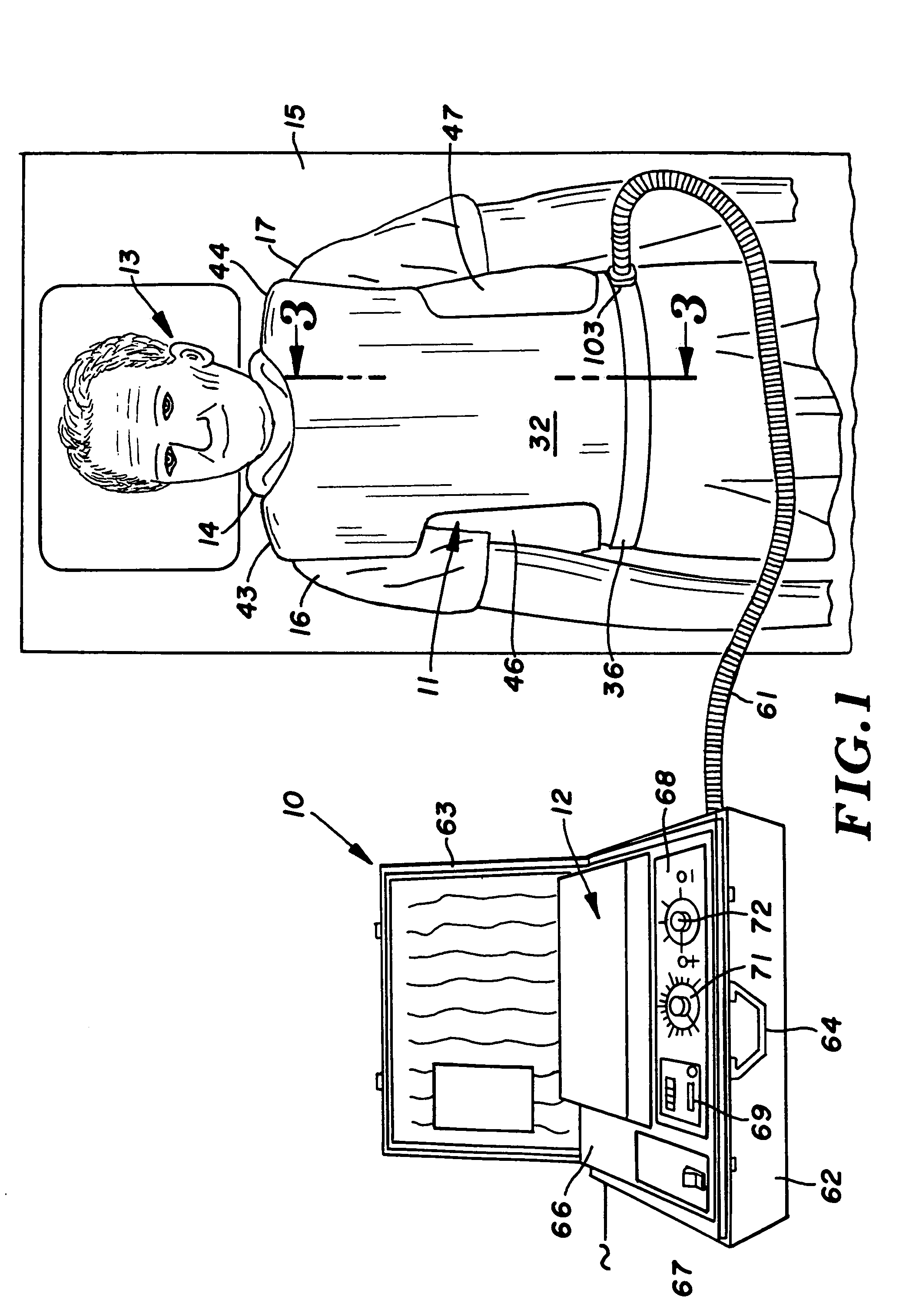Respiratory vest with inflatable bladder
a technology of respirator and inflatable bladder, which is applied in the direction of artificial respiration, heart stimulation, therapy, etc., can solve the problems of affecting the quality of life, and accumulating mucus and debris in the lungs, so as to improve the clearance of airways and improve lung function
- Summary
- Abstract
- Description
- Claims
- Application Information
AI Technical Summary
Benefits of technology
Problems solved by technology
Method used
Image
Examples
Embodiment Construction
[0039]A pulsating apparatus, indicated generally at 10 in FIG. 1, includes a respiratory vest 11 and an air pressure and air pulse generator 12, known as a pulsator. Pulsating apparatus 10 is used to apply repetitive pressure pulses to the front of a person's thorax to enhance respiratory functions and provide secretion and mucus clearance therapy. An elongated flexible hose or tube 61 connecting vest 11 to generator 12 transfers air pressure and air pressure pulses from generator 12 to vest 11. An example of generator 12 is disclosed in U.S. Pat. No. 6,547,749 incorporated herein by reference. Other types of air pressure and pulse generators can be used to supply air pressure and pressure pulses to vest 11. Examples of air pressure and air pulse generators are disclosed in U.S. Pat. Nos. 1,898,652; 2,588,192; 2,918,917; 3,078,842; 4,838,263; 5,569,170 and 6,036,662.
[0040]As shown in FIG. 1, air pressure and pulse generator 12 is mounted in a case 62 having an open top and a cover 6...
PUM
 Login to View More
Login to View More Abstract
Description
Claims
Application Information
 Login to View More
Login to View More - R&D
- Intellectual Property
- Life Sciences
- Materials
- Tech Scout
- Unparalleled Data Quality
- Higher Quality Content
- 60% Fewer Hallucinations
Browse by: Latest US Patents, China's latest patents, Technical Efficacy Thesaurus, Application Domain, Technology Topic, Popular Technical Reports.
© 2025 PatSnap. All rights reserved.Legal|Privacy policy|Modern Slavery Act Transparency Statement|Sitemap|About US| Contact US: help@patsnap.com



